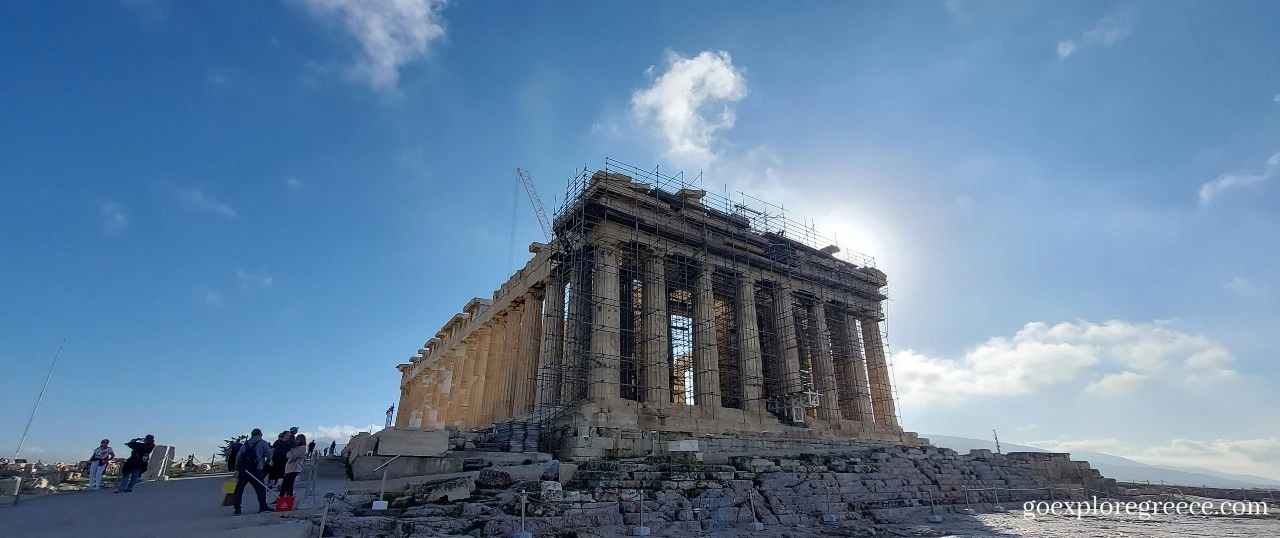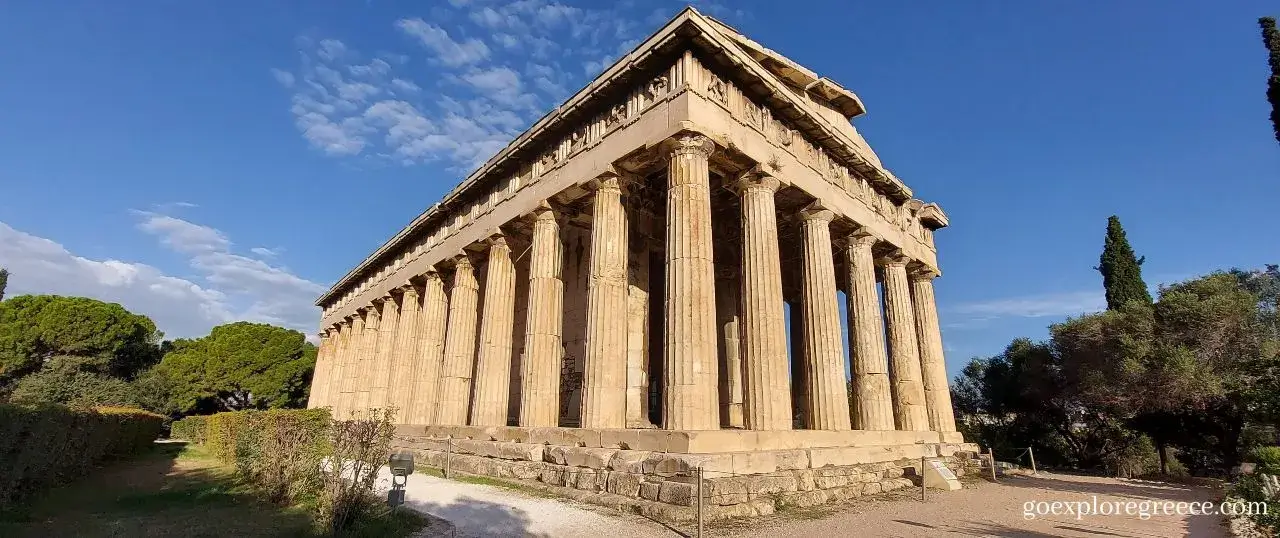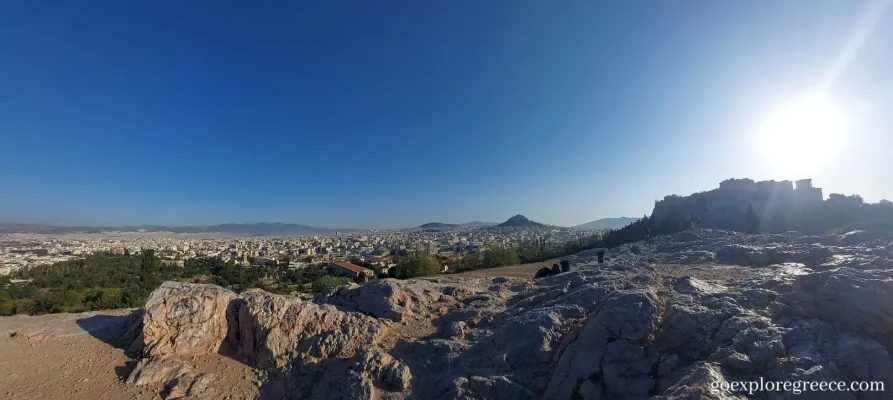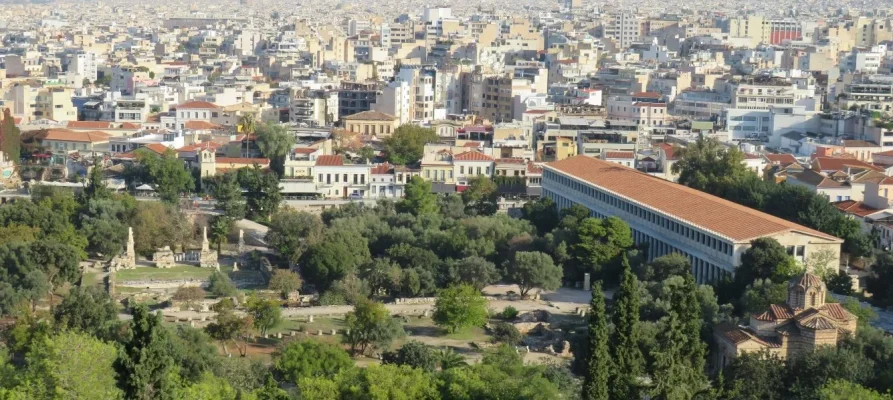Areopagus
Areopagus
I remember it like it was yesterday – my first time walking up the steps of the Areopagus in Athens. The sun was setting, casting a golden glow over the entire city of Athens, and the energy of the place was inspiring. I knew immediately that this was no ordinary destination. I found myself standing in a place steeped in history, philosophy, and mythology, with a breathtaking view.
Nestled just below the Acropolis of Athens, the Areopagus, also known as Mars Hill or Ares Rock, is a rocky outcrop with a storied past. It was once the meeting place of the city’s most influential citizens, who gathered to discuss and debate the most pressing matters of their time. This site has also played host to some of the most famous speeches in history, such as that given by the Apostle Paul during his visit to Athens in the first century. This significant event is recorded in the New Testament, specifically in Acts 17:16-34. Today, a plaque inscribed with his words in Greek can be found at the foot of the hill, reminding visitors of the deep spiritual significance of this sacred site.
The name “Areopagus” is derived from the Greek god of war, Ares (Mars in Roman mythology), and “pagus,” which means “hill” or “rock.” According to ancient mythology, the gods put Ares on trial here for the murder of Poseidon’s son, Alirrothios. As a result, the hill became a symbol of divine justice and a meeting place for the Areopagus Council, the most revered court in ancient Athens.
But the Areopagus isn’t just a place for history buffs. The view from the top is nothing short of awe-inspiring. As I reached the summit, I found myself overlooking the entire city of Athens, with a clear view of the iconic Parthenon atop the Acropolis. At that moment, I was struck by this ancient city’s incredible beauty and grandeur and the realisation that I was standing in the heart of one of the world’s most important cultural centres.
The Areopagus is also a fantastic spot to catch a picturesque sunrise and sunset. There’s something truly magical about watching the sun rise or dip below the horizon, casting a warm glow over the ancient city below. It’s the perfect place to take a moment to reflect on your travels and soak in the beauty of Athens.
Of course, only a visit to the Areopagus is complete with exploring the surrounding area. The Plaka district, located at the foot of the Acropolis, is a charming neighbourhood full of winding streets and colourful buildings. It’s the perfect place to grab a bite to eat or browse through local artisan shops. Be sure to also visit the Ancient Agora of Athens, just a short walk from the Areopagus, where you’ll find ruins of ancient marketplaces, temples, and public buildings.
What I love most about the Areopagus, though, is the sense of connection it offers. Whether you’re a history enthusiast, a fan of stunning views, or simply someone looking for a quiet moment of reflection, this ancient site has something for everyone. It’s a place where you can truly feel the weight of history and the spirit of Athens, a city that has stood the test of time.
So, if you’re planning a trip to Athens, I urge you to make the Areopagus a priority on your itinerary. Trust me, you won’t regret it. Climb those steps, take in the views, and immerse yourself in the rich history of this extraordinary place. You’ll leave with memories that will last a lifetime and a deeper appreciation for the incredible legacy of Athens.
When visiting the Areopagus, I recommend setting aside at least an hour or two to fully appreciate everything it offers. Take your time wandering around the rocky outcrop, imagining the great thinkers who once stood where you are now. Bring a camera to capture the stunning views and the beautiful colours of the sunset, as well as the unique features of the surrounding area.
If you’re in Athens during the warmer months, consider attending one of the many cultural events that take place at the foot of the Areopagus. From live music to outdoor theatre performances, the area comes alive with activity, adding another layer of excitement to your visit.
Accessibility for individuals with disabilities and impairments at the Areopagus is, unfortunately, quite limited. The ancient site is characterized by its uneven, rocky terrain and a steep staircase carved into the rock, which may pose significant challenges for those with mobility issues.
No handrails or ramps are available to assist visitors with disabilities in accessing the top of the Areopagus, making it difficult for wheelchair users or people with walking aids to navigate the site comfortably and safely. Additionally, the rough surface of the rock can be slippery, particularly in wet conditions, further complicating access for individuals with mobility impairments.
Visitors with visual impairments may also face challenges due to the uneven terrain and the lack of tactile or audio guides to assist in navigating the site.




















